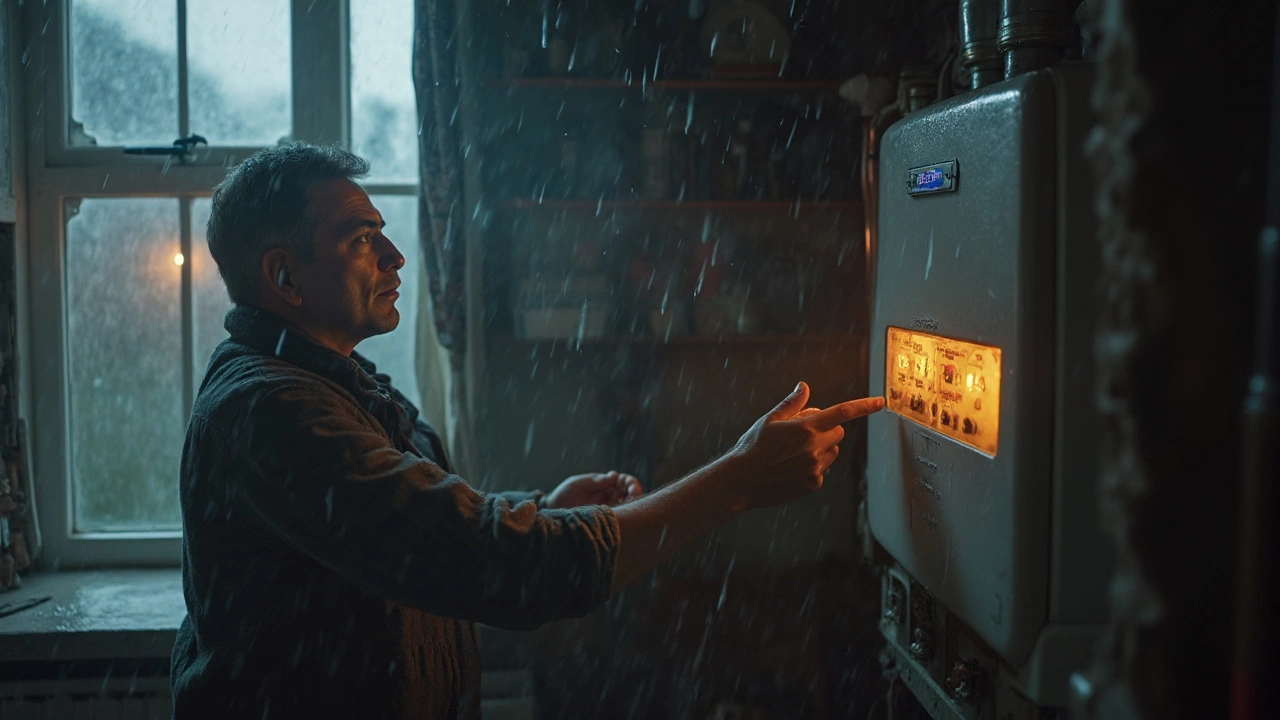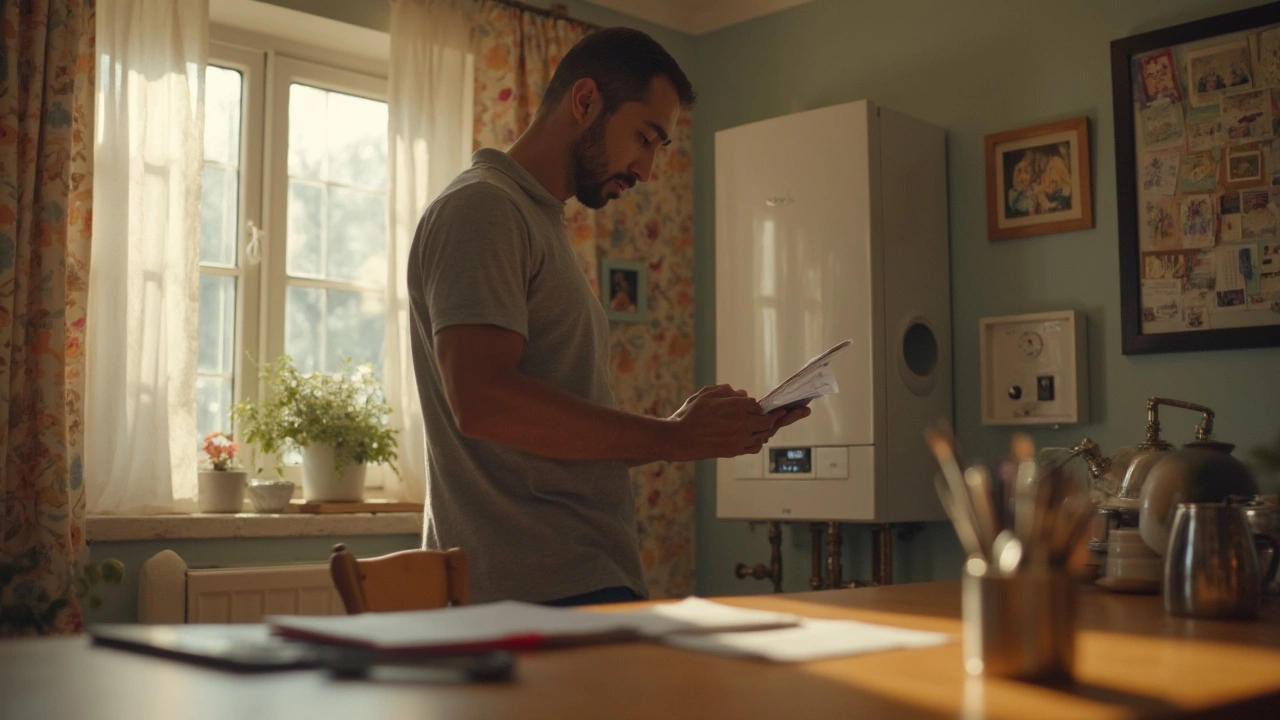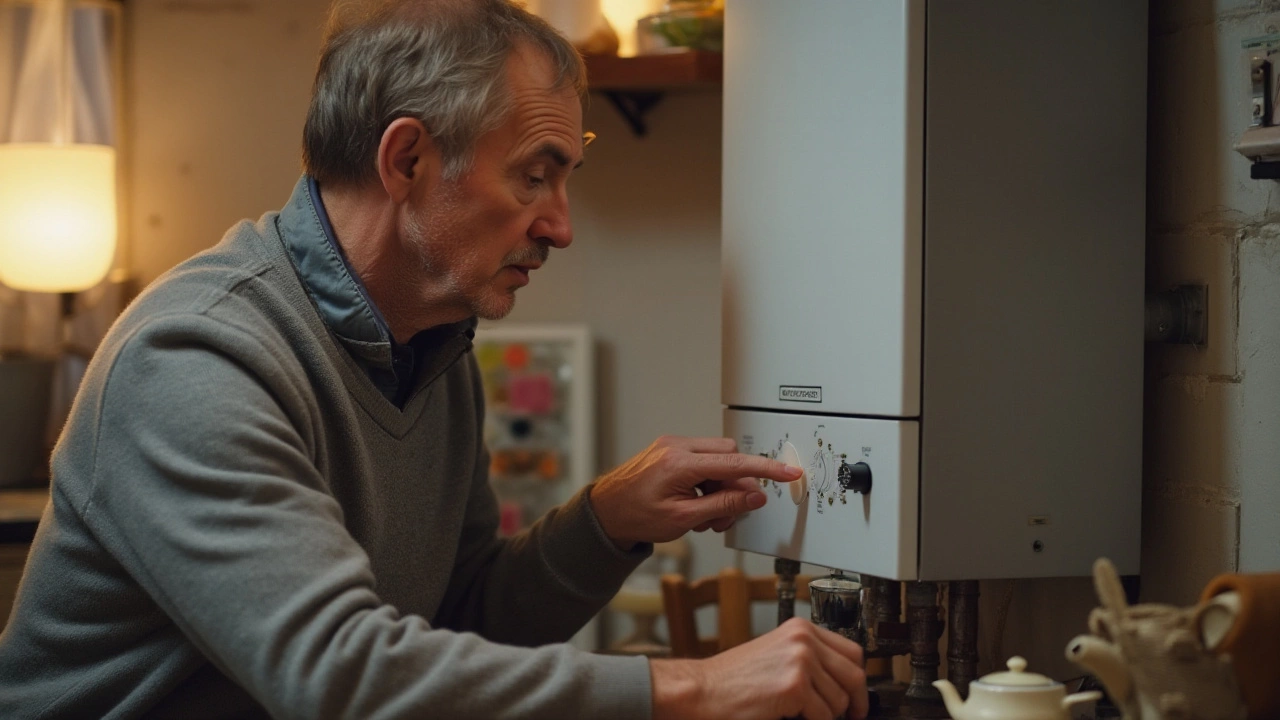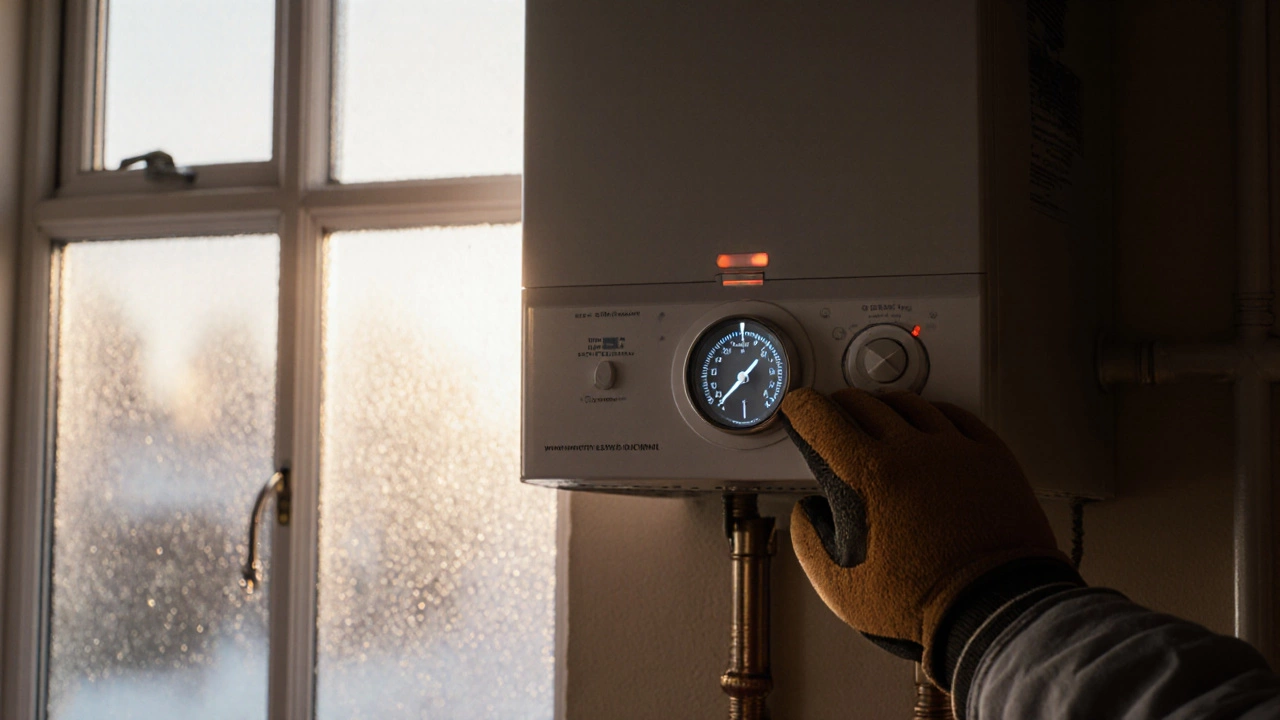
- 9 Oct 2025
- Gideon Thornton
- 0
Boiler Problem Diagnostic Tool
Low Pressure
Pressure gauge below 1 bar
No Heat / No Hot Water
Cold radiators or lukewarm taps
Water Leak
Puddles or damp walls around boiler
Strange Noises
Banging, whistling, or gurgling sounds
Pilot Light Issues
Pilot keeps going out or ignition errors
Thermostat Problems
Short-cycling or no response to temp changes
Select one or more symptoms above to see detailed troubleshooting steps.
Ever heard that unsettling clunk or watched the pressure gauge crawl down while the house stays chilly? Those moments usually point to one of the boiler problems most homeowners face. Below you’ll find a straight‑to‑the‑point guide that tells you what’s going wrong, why it matters, and how far you can go on your own before dialing a pro.
Quick Takeaways
- Low pressure, no heat, and water leaks are the three most frequent boiler issues.
- Most problems show clear symptoms - strange noises, flashing error codes, or cold radiators.
- A short checklist can save you time and money by catching simple fixes early.
- Regular maintenance (bleeding radiators, checking pressure, cleaning the condensate pipe) prevents 70% of breakdowns.
- Call a certified engineer when you spot gas smells, persistent error codes, or extensive leaks.
Understanding Your Boiler
Boiler is a closed‑loop heating system that burns fuel (gas, oil, or electricity) to heat water, which then circulates through radiators or under‑floor pipes to warm your home. Modern boilers are often combi units, meaning they provide both space heating and domestic hot water from a single appliance.
Inside that metal box sit several key components - the combustion chamber where fuel mixes with air and ignites to create heat, the heat exchanger a network of copper or stainless‑steel tubes that transfer heat from the flame to the water, and the thermostat the electronic brain that tells the boiler when to fire up or shut down. Knowing what each part does makes troubleshooting a lot less intimidating.
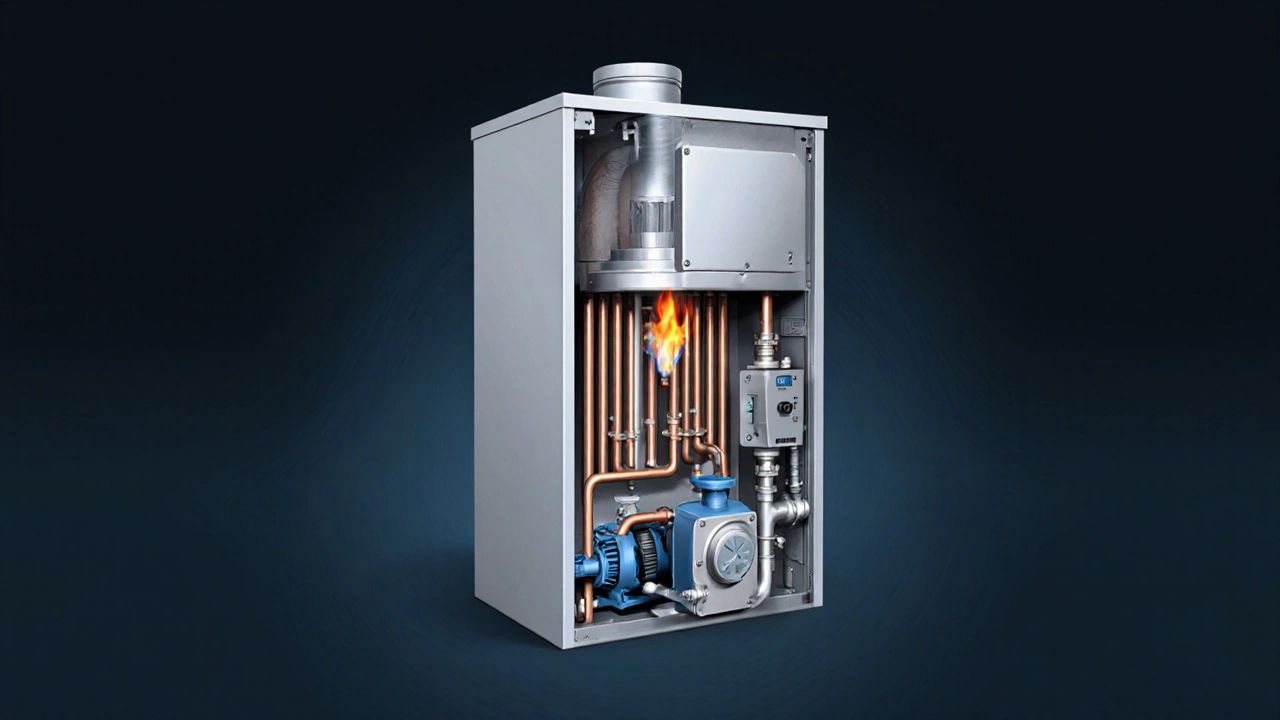
Top 7 Common Boiler Problems
1. Low Boiler Pressure
**Symptoms:** Pressure gauge below 1bar, occasional ‘low pressure’ warning on the display, radiators heating unevenly.
**Cause:** A minor leak in the system, loss of water from bleeding radiators, or a faulty pressure‑relief valve.
**DIY Fix:**
- Turn off the boiler and let it cool.
- Locate the filling loop (usually a flexible metal hose with two taps).
- Open both taps slowly until the gauge reaches 1.2-1.5bar.
- Close the taps and wipe away any water on the floor.
2. No Heat or No Hot Water
**Symptoms:** Radiators stay cold, tap water lukewarm, or the boiler’s ‘no hot water’ indicator flashes.
**Cause:** Faulty pump circulates heated water through the system; when it fails, heat never reaches the rooms, a blocked heat exchanger can reduce the system’s ability to warm water, or a broken thermostat might be sending a ‘stay off’ signal.
**DIY Fix:**
- Reset the boiler using the manufacturer's reset button (often a small recessed push‑button).
- Check that the thermostat is set above the current room temperature.
- Listen for the pump’s humming; if silent, the pump may need replacement.
3. Water Leaks
**Symptoms:** Puddles around the boiler, damp patches on the wall, a faint ‘wet’ smell.
**Cause:** Corroded pipework, a loose pressure valve releases excess pressure; a faulty valve may drip continuously, or a cracked boiler body.
**DIY Fix:**
- Turn off the gas and electricity supply to the boiler.
- Dry the area and locate the drip point.
- If the leak is from a visible hose or pipe joint, tighten the fitting with a wrench.
4. Strange Noises
**Symptoms:** Banging (often called ‘kettling’), whistling, gurgling, or ticking sounds.
**Cause:** Scale build‑up inside the heat exchanger restricts water flow, causing it to boil violently, air trapped in the system, or a loose mounting bracket.
**DIY Fix:**
- Bleed radiators to release trapped air.
- Check that the boiler is level; loosen or tighten mounting bolts if needed.
- Schedule an annual power‑flushing to remove scale - a task best left to a qualified engineer.
5. Pilot Light Won’t Stay Lit (or Ignition Errors)
**Symptoms:** Pilot light repeatedly goes out, or the digital display shows an 'E' code related to ignition.
**Cause:** Dirty or misaligned pilot assembly creates the initial flame that ignites the main burner, a weak gas supply, or a faulty flame sensor.
**DIY Fix:**
- Turn off gas, wait a minute, then turn it back on.
- Clean the pilot nozzle with a soft brush to remove dust.
- Follow the manufacturer’s manual to re‑light the pilot (usually hold a button for 30seconds).
6. Faulty Thermostat or Controls
**Symptoms:** Boiler cycles on and off rapidly (short‑cycling), or fails to respond to temperature changes.
**Cause:** A dead battery in a wireless thermostat, a corrupted control board, or wiring issues.
**DIY Fix:**
- Replace batteries in the thermostat.
- Reset the boiler via the reset button.
- Inspect visible wiring for loose connections.
7. Condensate Pipe Blockage or Freeze
**Symptoms:** Water pooling under the boiler, error code indicating condensate blockage, or a frosty pipe outside.
**Cause:** Debris (dust, algae) clogging the pipe, or freezing in cold weather.
**DIY Fix:**
- Locate the PVC condensate pipe (usually runs to a drain).
- Detach the pipe and clear any blockage with a garden hose.
- If frozen, gently warm the pipe with a hair dryer - never use open flame.
Basic Troubleshooting Checklist
- Check the boiler’s power supply and gas valve.
- Read the display for error codes; note them before calling help.
- Inspect pressure gauge; top up if below 1bar.
- Bleed any radiators that feel cool at the top.
- Listen for abnormal noises; note their pattern.
- Examine visible pipework for drips or corrosion.
- Ensure the condensate pipe is clear and not frozen.
Preventive Maintenance Tips
- Schedule an annual service with a Gas Safe registered engineer - they’ll clean the heat exchanger, check the pressure valve, and test safety devices.
- Bleed radiators at the start of the heating season to remove trapped air.
- Keep the boiler area clear of clutter; good airflow helps the fan and reduces overheating.
- Inspect the gas supply the pipe delivering natural gas or LPG to the boiler for signs of wear or corrosion.
- Wrap outdoor condensate pipes with pipe‑insulation during winter.
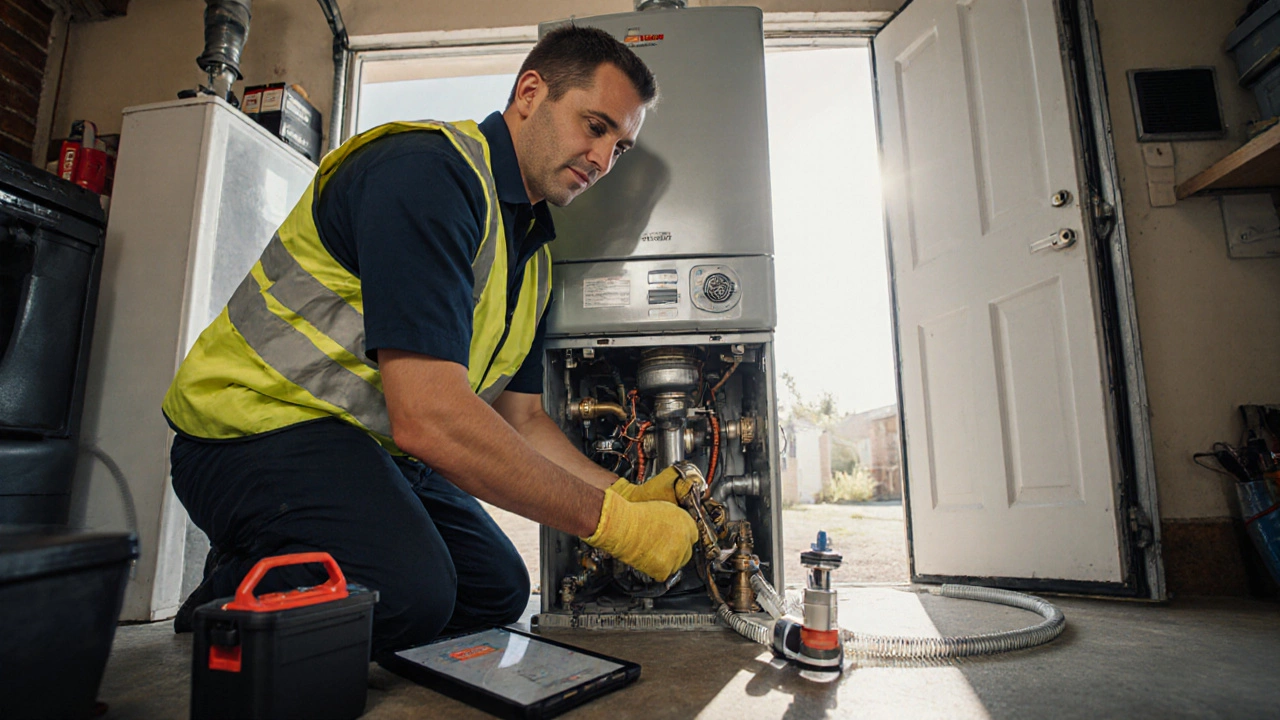
When to Call a Professional
Even the savviest DIYer should step back when any of the following appear:
- A distinct smell of gas - shut off the gas valve and evacuate.
- Repeated error codes after resetting.
- Large or continuous water leaks from the boiler body.
- Persistent low pressure despite topping up.
- Boiler age over 15years, especially if repair costs exceed half its replacement price.
Problem Overview Table
| Problem | Typical Symptoms | Likely Cause | Simple DIY Fix |
|---|---|---|---|
| Low Pressure | Gauge < 1bar, warning light | Lost water from bleeding or minor leak | Top up via filling loop |
| No Heat / No Hot Water | Cold radiators, lukewarm taps | Failed pump or thermostat | Reset boiler, check thermostat settings |
| Water Leak | Puddles, damp walls | Loose pressure valve, corroded pipe | Tighten fittings, replace valve if visible |
| Strange Noises | Banging, whistling | Scale in heat exchanger, trapped air | Bleed radiators, schedule power‑flush |
| Pilot Light Won’t Stay Lit | Pilot keeps extinguishing | Dirty nozzle, weak gas flow | Clean nozzle, re‑light per manual |
| Thermostat/Control Fault | Short‑cycling, no response | Dead battery, bad control board | Replace batteries, reset boiler |
| Condensate Pipe Blockage | Water overflow, error code | Debris or freezing | Clear pipe, insulate in winter |
Frequently Asked Questions
Why does my boiler keep losing pressure?
Pressure drops usually mean water is escaping somewhere - either through a tiny leak, a faulty pressure‑relief valve, or because you’ve bled radiators. Topping up will restore pressure, but if it falls again quickly you need a professional leak test.
What does “kettling” sound mean?
Kettling is a loud bubbling noise caused by limescale building up inside the heat exchanger. The scale restricts water flow, making it boil and create steam bubbles. A power‑flush or professional descaling is required.
Can I fix a leaking pressure valve myself?
If the leak is just a dripping screw, tightening might stop it. However, most pressure‑relief valve leaks indicate the valve has worn out and must be replaced by a Gas Safe engineer.
How often should I bleed radiators?
Bleed them at the start of each heating season and whenever you notice cold spots on the top of a radiator. It’s a quick 5‑minute job that keeps air from trapping heat.
Is it safe to use a hair dryer on a frozen condensate pipe?
Yes, gently warm the pipe with a hair dryer. Keep the dryer moving to avoid overheating a single spot, and never use an open flame.


